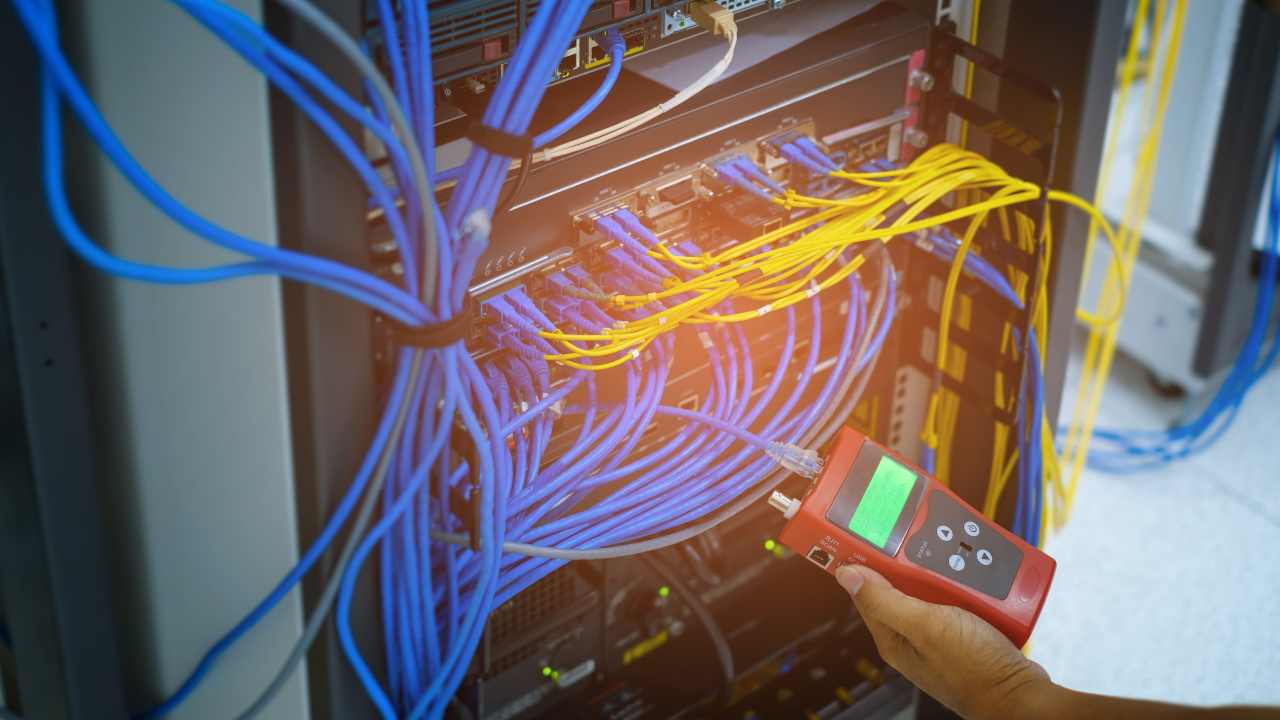The Importance of Structured Cabling in Modern Networks
The Importance of Structured Cabling in Modern Networks

In the dynamic landscape of modern technology, the backbone of efficient and reliable networks lies in structured cabling. This article explores the vital role that structured cabling plays in modern networks, from its evolution and components to its significant impact on network performance, scalability, security, and overall cost-effectiveness.
Introduction to Structured Cabling
Structured cabling refers to a standardized system of network cabling that encompasses various elements such as cables, connectors, racks, and management tools. Unlike traditional point-to-point cabling, structured cabling provides a more organized and easily manageable infrastructure for data and voice communications.
Evolution of Network Infrastructure
The evolution of network infrastructure has seen a shift towards structured cabling due to its ability to support high-speed data transmission, accommodate emerging technologies like IoT and cloud computing, and simplify network management processes.
Components of Structured Cabling
- Copper and fiber-optic cables
- Patch panels and connectors
- Racks, cabinets, and cable trays
- Network switches and routers
- Cable management systems
Benefits of Structured Cabling
Structured cabling offers several benefits to organizations, including:
- Simplified installation and maintenance
- Improved reliability and uptime
- Scalability to accommodate future growth
- Enhanced network performance and speed
- Cost-effectiveness compared to traditional cabling systems
Importance in Modern Networks
In modern networks, structured cabling is crucial for ensuring seamless connectivity, data integrity, and efficient communication across various devices and systems. It provides a solid foundation for deploying advanced technologies and supporting mission-critical applications.
Standards and Regulations
Adhering to industry standards and regulations such as TIA/EIA and ISO/IEC is essential for designing and implementing reliable structured cabling systems. Compliance ensures interoperability, safety, and performance consistency.
Future Trends in Structured Cabling
The future of structured cabling is marked by innovations such as higher data speeds, power-over-Ethernet (PoE) advancements, and intelligent cabling solutions that enhance automation and management capabilities.
Challenges and Solutions
Despite its benefits, structured cabling faces challenges like cable management complexities and compatibility issues. However, advanced cable management tools, labeling techniques, and regular audits can address these challenges effectively.
Case Studies Showcasing Success
Several organizations have experienced significant improvements in network performance and reliability after implementing structured cabling solutions. Case studies illustrate real-world examples of successful deployments and their impact on business operations.
Cost-effectiveness and ROI
Investing in structured cabling offers a high return on investment (ROI) by reducing downtime, maintenance costs, and the need for frequent upgrades. The long-term savings and operational efficiencies justify the initial investment in quality cabling infrastructure.
Sustainability Aspects
Structured cabling promotes sustainability by optimizing energy consumption, reducing cable waste, and supporting green initiatives through efficient resource utilization and lifecycle management.
Training and Maintenance
Proper training and regular maintenance are essential for maximizing the benefits of structured cabling. Educating IT personnel on best practices and conducting routine inspections ensure optimal performance and longevity of the cabling infrastructure.
Integration with Smart Building Technologies
Structured cabling plays a crucial role in integrating smart building technologies such as IoT sensors, building automation systems, and energy management systems. A well-designed cabling infrastructure facilitates seamless communication between devices, enhances data analytics capabilities, and enables efficient resource utilization within smart buildings.
Support for Remote Workforce and Cloud Connectivity
With the rise of remote work and cloud-based applications, structured cabling ensures reliable connectivity for remote employees accessing corporate networks and cloud services. It enables high-speed data transmission, low latency, and secure connectivity, fostering collaboration and productivity across distributed teams.
Compliance with Industry Regulations and Data Privacy Laws
Organizations must comply with industry regulations and data privacy laws governing data transmission, storage, and security. Structured cabling solutions designed with encryption protocols, access controls, and audit trails help organizations meet regulatory requirements, protect sensitive data, and mitigate legal risks associated with data breaches or non-compliance.
Scalability and Flexibility
The scalability and flexibility of structured cabling enable organizations to adapt to evolving technology trends, accommodate new equipment, and expand their networks without significant disruptions or overhauls.
Security Considerations
Implementing security measures such as encrypted connections, access controls, and intrusion detection systems is crucial to protect sensitive data transmitted through structured cabling networks and mitigate cybersecurity risks.
Conclusion: Optimizing Networks with Structured Cabling
In conclusion, structured cabling is not just a technical necessity but a strategic asset for modern networks. Its ability to provide a robust, organized, and future-ready infrastructure lays the foundation for enhanced connectivity, productivity, and competitiveness in today’s digital age.








